Kareem Abdelfatah
Forecasting Application Counts in Talent Acquisition Platforms: Harnessing Multimodal Signals using LMs
Nov 19, 2024Abstract:As recruitment and talent acquisition have become more and more competitive, recruitment firms have become more sophisticated in using machine learning (ML) methodologies for optimizing their day to day activities. But, most of published ML based methodologies in this area have been limited to the tasks like candidate matching, job to skill matching, job classification and normalization. In this work, we discuss a novel task in the recruitment domain, namely, application count forecasting, motivation of which comes from designing of effective outreach activities to attract qualified applicants. We show that existing auto-regressive based time series forecasting methods perform poorly for this task. Henceforth, we propose a multimodal LM-based model which fuses job-posting metadata of various modalities through a simple encoder. Experiments from large real-life datasets from CareerBuilder LLC show the effectiveness of the proposed method over existing state-of-the-art methods.
Tripartite Vector Representations for Better Job Recommendation
Jul 23, 2019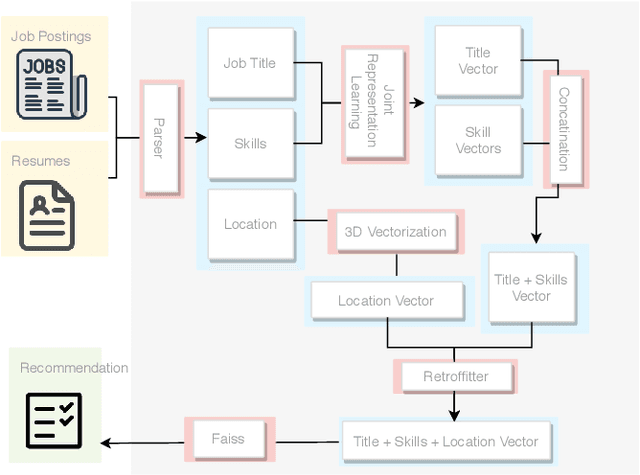
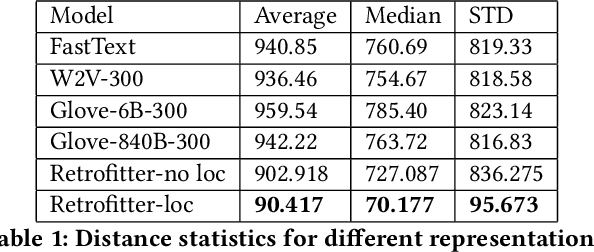
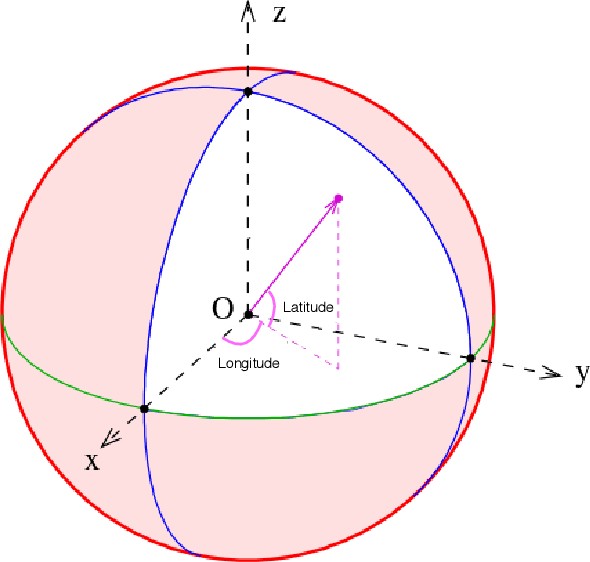
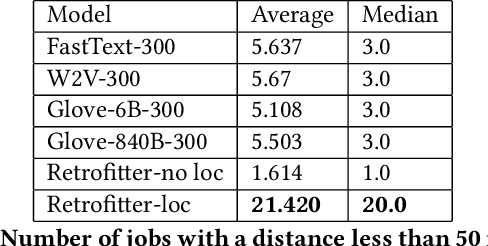
Abstract:Job recommendation is a crucial part of the online job recruitment business. To match the right person with the right job, a good representation of job postings is required. Such representations should ideally recommend jobs with fitting titles, aligned skill set, and reasonable commute. To address these aspects, we utilize three information graphs ( job-job, skill-skill, job-skill) from historical job data to learn a joint representation for both job titles and skills in a shared latent space. This allows us to gain a representation of job postings/ resume using both elements, which subsequently can be combined with location. In this paper, we first present how the presentation of each component is obtained, and then we discuss how these different representations are combined together into one single space to acquire the final representation. The results of comparing the proposed methodology against different base-line methods show significant improvement in terms of relevancy.
Environmental Modeling Framework using Stacked Gaussian Processes
Jun 18, 2017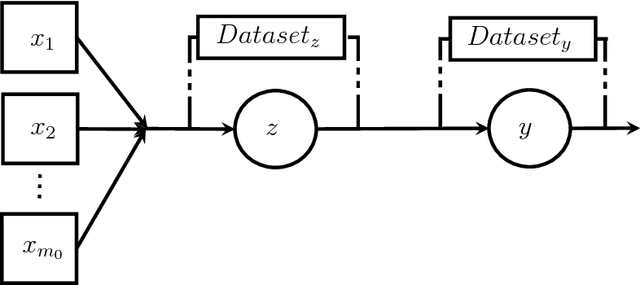
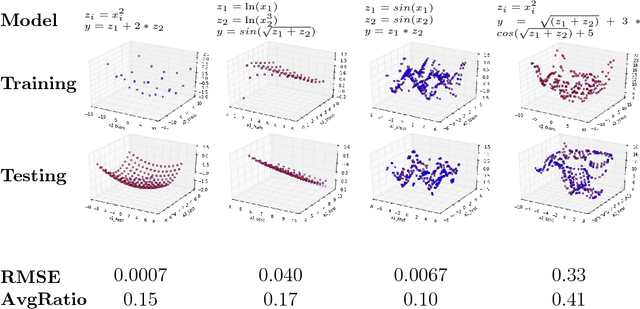
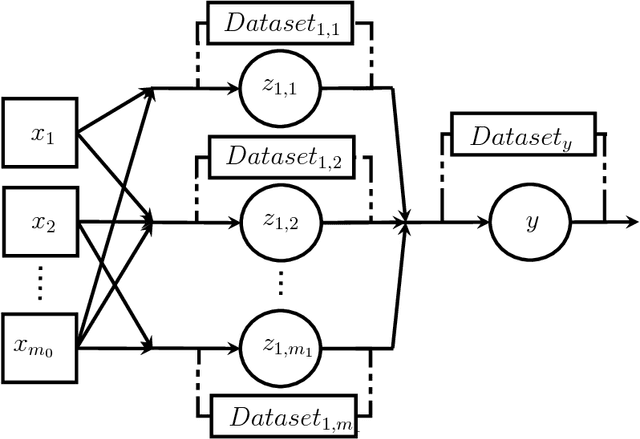
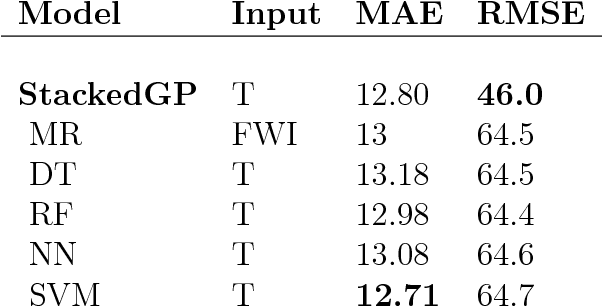
Abstract:A network of independently trained Gaussian processes (StackedGP) is introduced to obtain predictions of quantities of interest with quantified uncertainties. The main applications of the StackedGP framework are to integrate different datasets through model composition, enhance predictions of quantities of interest through a cascade of intermediate predictions, and to propagate uncertainties through emulated dynamical systems driven by uncertain forcing variables. By using analytical first and second-order moments of a Gaussian process with uncertain inputs using squared exponential and polynomial kernels, approximated expectations of quantities of interests that require an arbitrary composition of functions can be obtained. The StackedGP model is extended to any number of layers and nodes per layer, and it provides flexibility in kernel selection for the input nodes. The proposed nonparametric stacked model is validated using synthetic datasets, and its performance in model composition and cascading predictions is measured in two applications using real data.
LooseCut: Interactive Image Segmentation with Loosely Bounded Boxes
Nov 22, 2015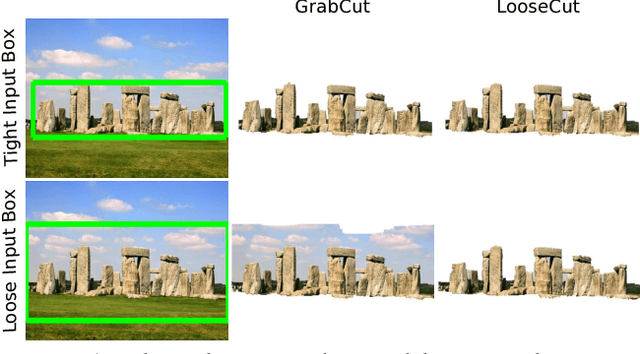


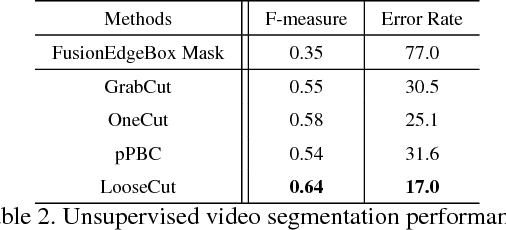
Abstract:One popular approach to interactively segment the foreground object of interest from an image is to annotate a bounding box that covers the foreground object. Then, a binary labeling is performed to achieve a refined segmentation. One major issue of the existing algorithms for such interactive image segmentation is their preference of an input bounding box that tightly encloses the foreground object. This increases the annotation burden, and prevents these algorithms from utilizing automatically detected bounding boxes. In this paper, we develop a new LooseCut algorithm that can handle cases where the input bounding box only loosely covers the foreground object. We propose a new Markov Random Fields (MRF) model for segmentation with loosely bounded boxes, including a global similarity constraint to better distinguish the foreground and background, and an additional energy term to encourage consistent labeling of similar-appearance pixels. This MRF model is then solved by an iterated max-flow algorithm. In the experiments, we evaluate LooseCut in three publicly-available image datasets, and compare its performance against several state-of-the-art interactive image segmentation algorithms. We also show that LooseCut can be used for enhancing the performance of unsupervised video segmentation and image saliency detection.
 Add to Chrome
Add to Chrome Add to Firefox
Add to Firefox Add to Edge
Add to Edge